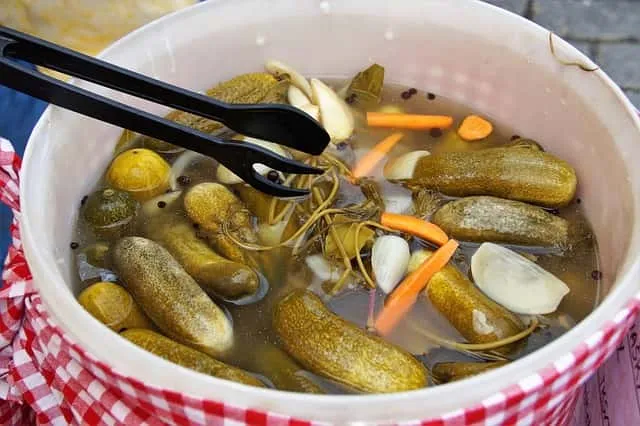Hey, fellow food lovers and life explorers! When we enjoy those mouth-watering pickles in the supermarket, have you ever thought about how they can stay on the shelves safely for a long time while maintaining their deliciousness? The answer lies in an often overlooked but crucial link - disinfection! Today, let's talk about the "invisible guard" in the food processing factory that silently protects the safety of our dining tables - chlorine dioxide disinfectant.

Let’s take the pickled vegetable industry as an example. There are many tricks involved. Many pickled vegetable manufacturers are troubled by a problem, that is, it is difficult to preserve and keep fresh, and the shelf life is short. In fact, in most cases, it is microorganisms that are causing trouble. Think about it, in the process of making pickled vegetables, from cleaning the raw materials to processing and packaging, there are too many links that may be "targeted" by microorganisms. The surface of the vegetables themselves may carry various bacteria and molds. If the processing environment is unsanitary and the tools are not disinfected properly, the microorganisms will multiply like a party, causing the pickled vegetables to deteriorate, not only the taste will deteriorate, but also it may endanger health.
At this time, chlorine dioxide disinfectant is like a superhero! In the United States, from large food factories in bustling cities to family workshops in rural towns, more and more food processing practitioners are full of praise for it. Why is it so popular? First of all, this guy's sterilization ability is simply off the charts! Common "bad guy bacteria" such as E. coli and Salmonella can only "surrender" when they encounter chlorine dioxide. Even microorganisms with super tenacious vitality such as spores can be easily "taken down" by chlorine dioxide. Compared with traditional disinfectants, its sterilization efficiency is much higher, and it can clean up harmful microorganisms in the processing environment in a short time .
Moreover, chlorine dioxide disinfectant is particularly "considerate". It will not react with organic matter in food to produce worrying carcinogens like some traditional disinfectants, and its safety is absolutely top-notch! In the process of pickled vegetables processing, it can play a big role starting from the cleaning of vegetables. Soaking vegetables in 20PPM chlorine dioxide solution for 5-10 minutes can not only effectively kill bacteria and viruses on the surface of vegetables, but also extend the shelf life of pickled vegetables by 1-3 times! This means that we can enjoy delicious pickled vegetables for a longer time .
Before processing, it is also critical to disinfect the environment, tools and packaging materials. Use 50-100ppm chlorine dioxide solution to give the processing workshop a "spring cleanup", soak or wipe the tools thoroughly, and then disinfect the packaging materials, which can greatly reduce the chance of microbial contamination and ensure the quality of pickled vegetables.

However, even the best things have to be used in the right way. When using chlorine dioxide disinfectants, be sure to strictly follow the instructions to accurately control the concentration. If the concentration is too high, there may be residues, affecting the taste and safety of food; if the concentration is too low, it will not kill bacteria and will not have a disinfection effect. When operating, don't forget to wear protective equipment, such as gloves and masks, to protect yourself. Another important point is that you must not mix chlorine dioxide disinfectants with other disinfectants, otherwise toxic gases may be produced, which will cause big trouble!
Next time you open a bottle of delicious pickles or enjoy other processed foods, think about the chlorine dioxide disinfectant that silently protects food safety. If you also work in the food industry or are interested in food safety, you can really learn more about it. It may bring unexpected inspiration to your work! If you have any ideas, please feel free to chat with me in the comment section. Let's make the important issue of food safety clear together !